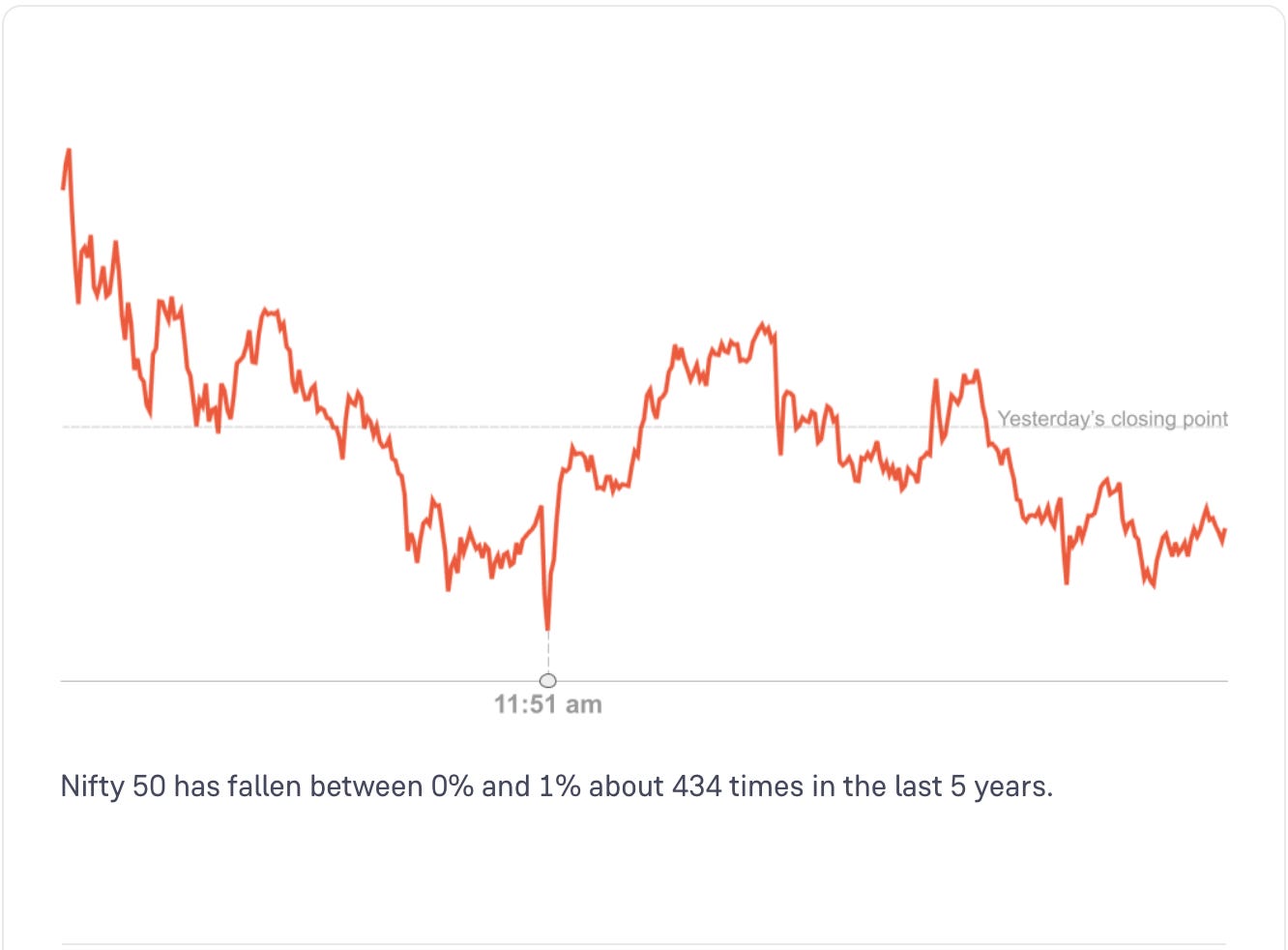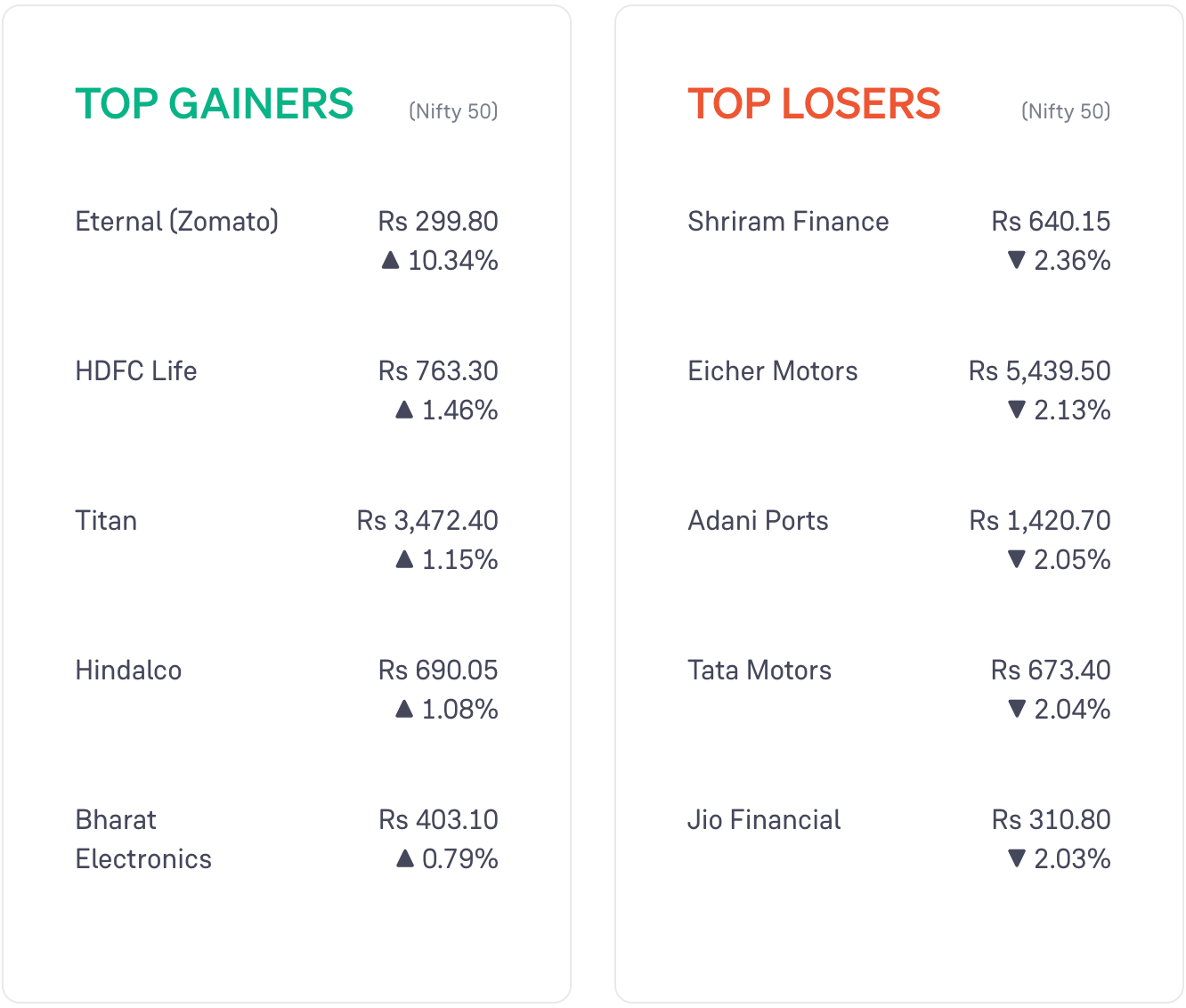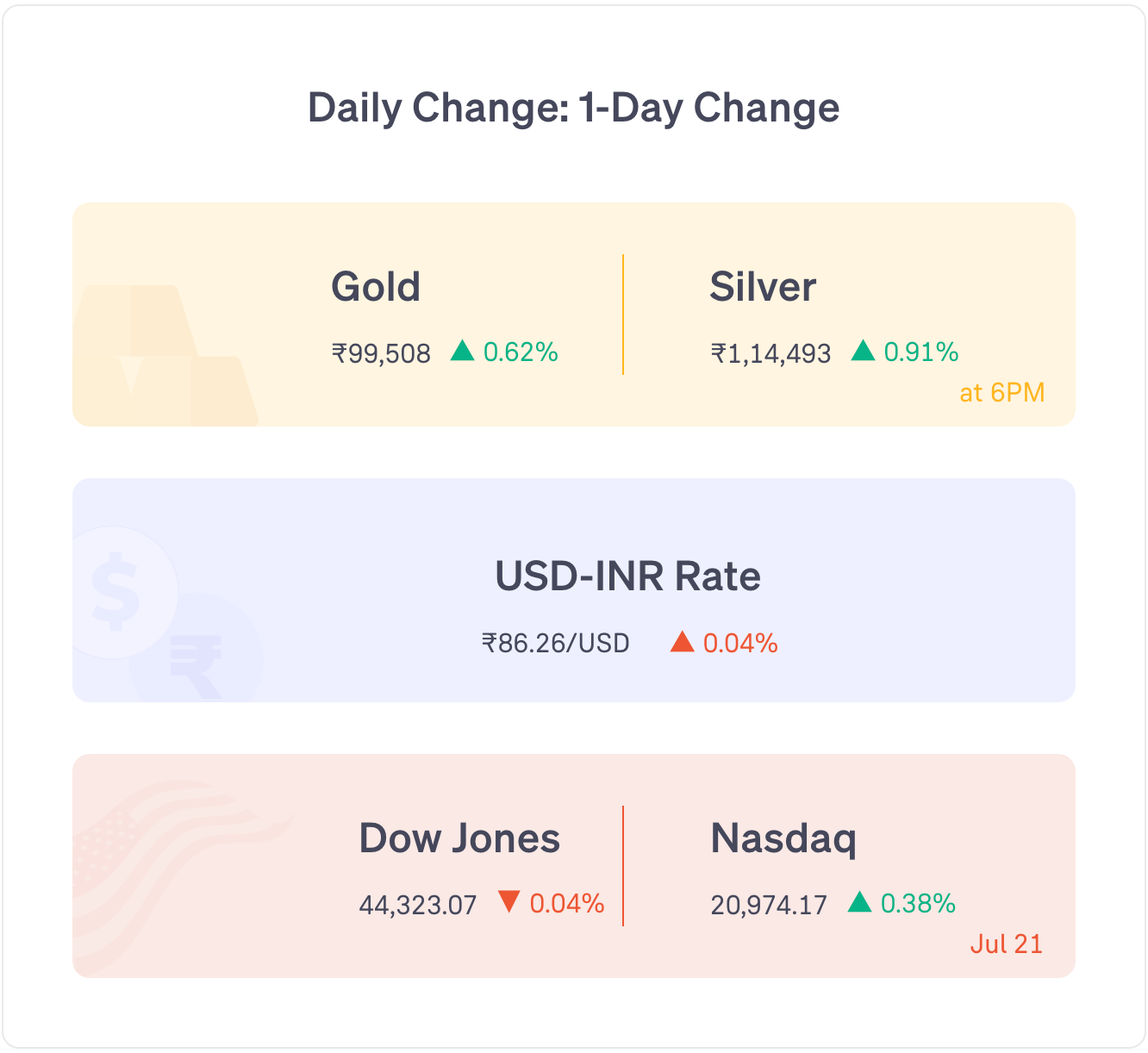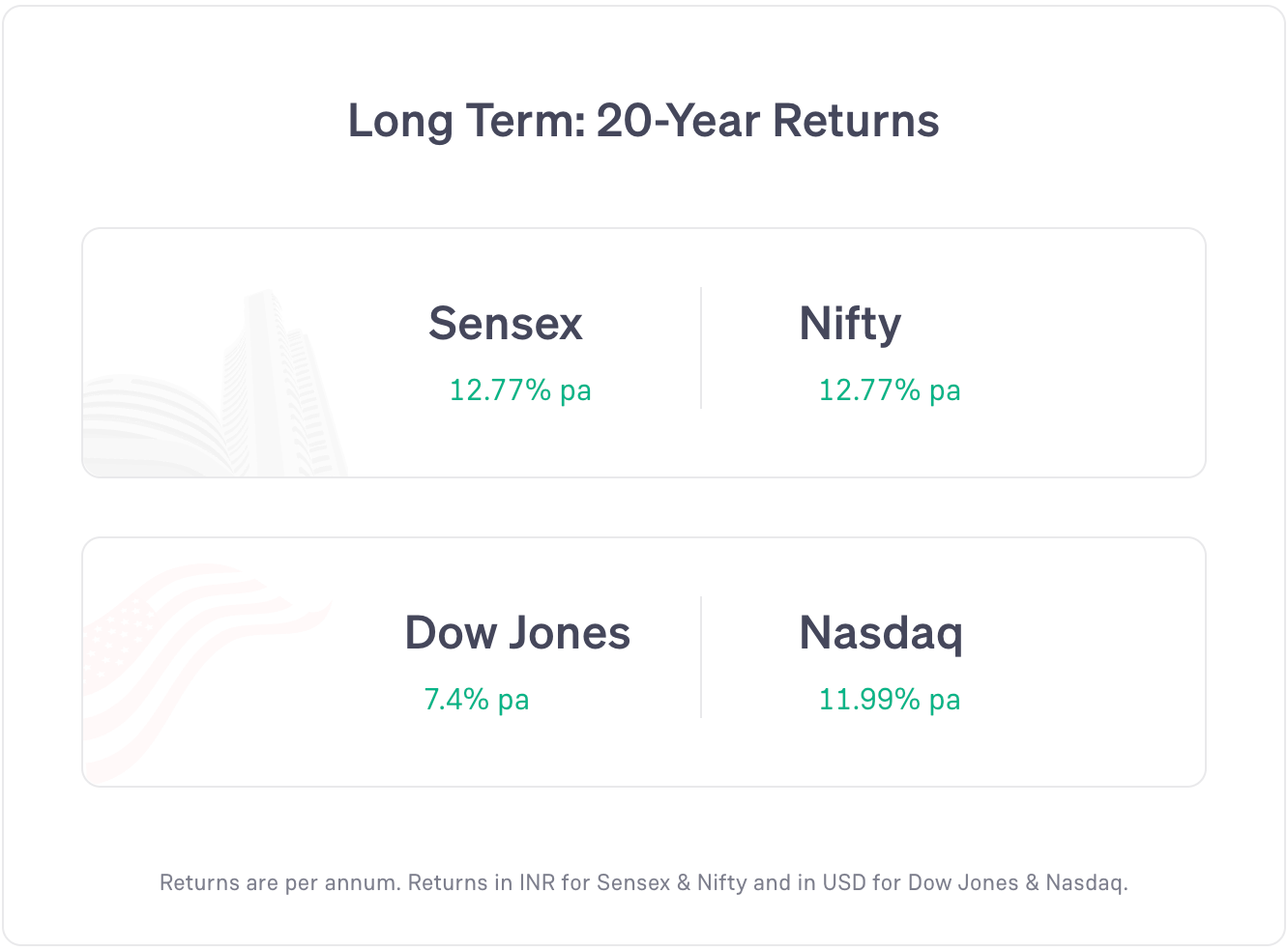Public banks' NPAs fall to 2.58%, Dixon's profits up 68%, & more — Daily Digest
Tuesday, 22 July 2025
Markets opened above yesterday’s closing point.
Nifty 50 fell in the first half of the day and closed in red.
All sectors’ stocks fell today. Media stocks and PSU bank stocks fell the most.
Global markets: Most US markets closed in green and European markets fell. Asian markets showed a mixed trend.
News
Gross NPAs of India’s public sector banks fell to 2.58% in May 2025, from 9.11% in March 2021: Finance Ministry.
IP filings in India rose 44% over 5 years from 4.77 lakh in FY 2020-21 to 6.90 lakh in FY 2024-25. It saw a significant growth in GI tags (380%), designs (266%), and patents (180%). They were followed by copyrights (83%), trademarks (28%), and Semiconductor Integrated Circuits Layout Designs (20%): Commerce Ministry.
Milky Mist Dairy Food has applied for a Rs 2,035 crore IPO with SEBI.
Stocks Updates
SBI: raised Rs 25,000 crore via a Qualified Institutional Placement (QIP).
IRFC: net profit rose 10.7% year-on-year to Rs 1,746 crore in the April-June quarter.
Dixon: net profit rose 68% year-on-year to Rs 225 crore in the April-June quarter.
Siemens Energy: will appeal a Russian court ruling that invalidated a contract and advance payments, which requires the company to pay Rs 444 crore and an 8% interest.
GAIL: fixed 4 August as the record date for the final dividend announced for FY 2024-25.
Havells India: net profit fell 15% year-on-year to Rs 348 crore in the April-June quarter.
Word of the Day
Trailing Returns
It is the returns that an investment gave over a specific time period till today.
It measures the point-to-point annualised returns of an investment.
Example: if ABC mutual fund has given a 12% trailing return for 3 years till today (22 July), it means that the fund has given an average return of 12% every year till today.
This can be done for multiple time periods — 1/3/5/10-years.
However, trailing returns might not always be the best metric.
Looking at rolling returns alongside this will give a more accurate picture.
6 Day Course
Theme: allocating monthly income
Day 2: Tuesday
Let’s talk about EMIs now.
The two biggest EMIs people tend to pay is home loan EMI and car loan EMI.
All your EMIs combined should not be more than 40% of your monthly income. Max 50% if stretched.
In case of home loan EMIs, it may be okay to reduce your monthly investment in SIPs, FD, etc, to pay home loan EMIs. In some cases, a person may prefer to invest 0% too.
That is fine for home loan EMIs but should not be the case for car loan EMIs.
Car loan EMIs should be around 10% of your total income — where the loan is for a total period of less than 4 or 5 years.
If there is an education loan EMI, that should also be counted in this same bracket.
Other EMIs like phone EMI, laptop EMI, etc should be avoided.
Featured Question
Q. “What are Index fund ? How are they different from other mutual fund ?”
In a mutual fund, a fund manager and a team of experts choose the stocks to buy, sell, and hold.
It is their job to research and keep an eye on the markets.
Such mutual funds are called actively managed funds.
Index funds do not have this. Index funds simply copy an index.
So, a Nifty 50 index fund will blindly invest in all 50 companies present in the Nifty 50 index.
They will invest based on the weightage of each company.
So, more money will be invested in the biggest company, then the next, and so on.
There is no human being deciding the shares to buy, sell, and hold.
Such mutual funds are called passively managed funds.
Did you like this edition?
Leave a feedback here!






